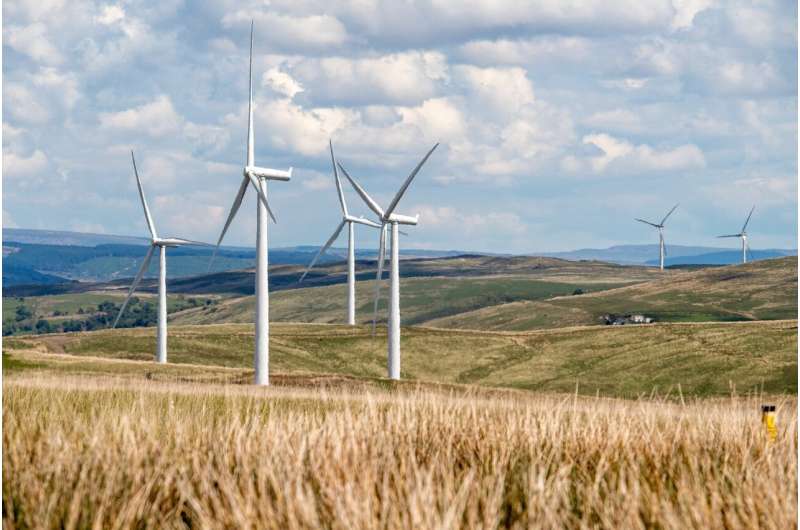This article has been reviewed according to Science X's editorial process and policies. Editors have highlighted the following attributes while ensuring the content's credibility:
fact-checked
trusted source
proofread
Powerful answers to energy questions may be blowing in the wind

While wind farms have become a widely popular method of generating energy, researchers are now looking at the impact of these large farms on wind patterns and the surrounding environment.
Using large-scale simulations to better understand the way air moves across and within wind farms, researchers from UBC Okanagan and Delft University of Technology (TU Delft) in the Netherlands have developed a modeling framework that will help improve wind energy forecasts and productivity.
The researchers also hope to learn how large wind farms can alter natural wind patterns.
"Wind farms are getting so large that they can actually alter the structure of the incoming wind," explains Dr. Joshua Brinkerhoff, an Associate Professor in UBCO's School of Engineering.
"The structure they are researching, which engineers call the atmospheric boundary layer, monitors how the wind's speed, temperature, and pressure varies with altitude."
Not only is locating where to put a wind farm a science in itself, he explains, but fine-tuning the location of individual turbines within a grouping is paramount to power output. While software helps guide the placement of the turbines to ensure the highest yield, poorly designed wind farms will generate less power than expected, making the wind farm uneconomical.
"Our modeling framework is among the first to clearly describe how wind farms alter the atmospheric boundary layer, which makes it tremendously valuable in helping engineers design better wind farms," says Dr. Brinkerhoff.
Working alongside colleagues from TU Delft, doctoral student Sebastiano Stipa traveled to the Netherlands as part of a Mitacs Globalink exchange to conduct the research. The research team has developed an open-source, finite-volume framework tailored for large-scale studies of how wind farms interact with the atmosphere.
The modeling framework, called the Toolbox for Stratified Convective Atmospheres (TOSCA), is designed to conduct extensive simulations of the turbulence created by big wind farms in realistic atmospheric conditions. The paper outlining TOSCA was published this week in Wind Energy Science.
TOSCA, explains Stipa, can address at least two of the significant challenges currently facing wind energy by simulating boundary layer turbulence over large areas and the simulation of an entire wind farm under realistic atmospheric flow conditions.
"The results of this research will lead to a better understanding of potential wind farm power estimates and an increase in their energy outputs," says Stipa. "This new modeling framework can serve as a roadmap for the industry."
Dr. Brinkerhoff notes the computer modeling can help when wind farms are being established, especially to forecast whether they can create energy efficiently.
"The most significant finding is that our model can capture the interaction between large wind farms and the oncoming wind," he adds. "To date, this hasn't been captured properly, leading to overestimation of how much power a wind farm will produce. This kind of overestimation is financially disastrous for the wind farm operators."
More information: Sebastiano Stipa et al, TOSCA—an open-source, finite-volume, large-eddy simulation (LES) environment for wind farm flows, Wind Energy Science (2024). DOI: 10.5194/wes-9-297-2024

















